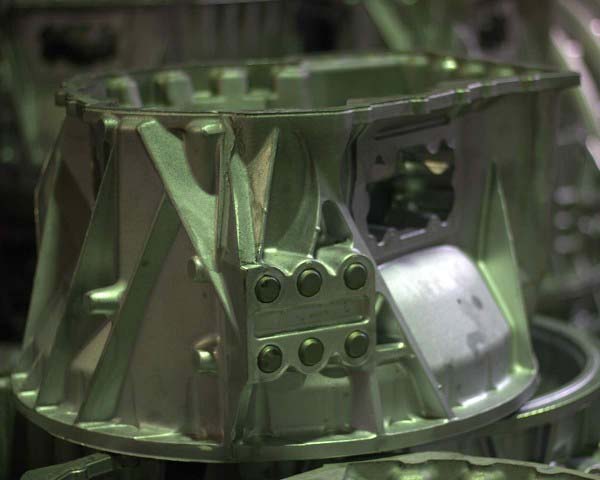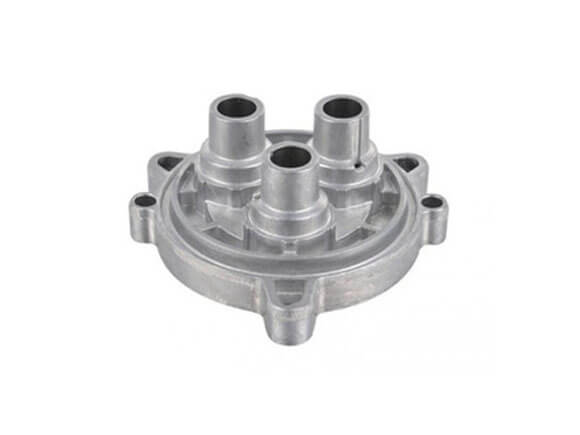How Aluminum Foundry innovations contribute to reliability
Wiki Article
Checking out the Role of Aluminum Casting in the Development of Industrial Production
Light weight aluminum casting has actually played an essential duty fit modern industrial production. Its durable and lightweight nature has changed the production of elements for various fields, including auto and aerospace. With developments in casting methods, the industry has actually seen improvements in accuracy and performance. As sustainability becomes progressively important, the recyclability of light weight aluminum adds an additional dimension to its importance. What ramifications does this have for the future of making practices?The Beginnings of Light Weight Aluminum Spreading
When the adaptability of light weight aluminum was very first identified, Light weight aluminum spreading has a rich history that dates back to the late 19th century. Originally, this light-weight metal was deemed testing to deal with as a result of its high melting factor and vulnerability to oxidation. Ingenious minds began to discover its possibility, leading to the development of various casting approaches. The intro of light weight aluminum into commercial applications marked a considerable juncture in production, permitting the creation of detailed components that were previously unattainable with various other metals. By the early 20th century, light weight aluminum casting had gained traction in numerous industries, from automotive to aerospace, owing to its toughness and lightweight residential properties. The establishment of factories and the emergence of aluminum alloys further drove its popularity, setting the phase for future innovations. The origins of light weight aluminum casting laid the groundwork for its important role in modern-day commercial manufacturing.Trick Improvements in Aluminum Casting Techniques
Recent innovations in light weight aluminum casting methods have substantially transformed industrial manufacturing. Advancements in die spreading processes have actually enhanced precision and performance, while the advancement of sand spreading has actually improved flexibility and cost-effectiveness. These growths are reshaping the landscape of light weight aluminum manufacturing and expanding its applications across different sectors.Die Spreading Innovations
As markets endeavor for enhanced efficiency and product top quality, die casting has actually emerged as a centerpiece for technology in light weight aluminum casting methods. Current innovations have actually concentrated on improving mold and mildew design, temperature control, and product residential properties, noticeably lowering cycle times and raising accuracy. The introduction of computer-aided style (CAD) and simulation software application has enabled suppliers to maximize pass away geometries and forecast prospective problems prior to manufacturing. Furthermore, the combination of automated systems has streamlined operations, improving consistency and decreasing human error. Technologies such as vacuum cleaner die casting and semi-solid metal spreading have actually even more enhanced the mechanical residential properties of light weight aluminum elements, leading to lighter, more powerful products. These advancements setting die spreading as an important element in the affordable landscape of modern manufacturing.Sand Spreading Advancement
Innovations in aluminum spreading techniques have not been restricted to pass away spreading; sand spreading has actually likewise undergone substantial evolution. Commonly reliant on hands-on processes, contemporary sand spreading has accepted automation and digital modern technologies, enhancing performance and accuracy. Innovations such as computer-aided design (CAD) permit for more intricate mold layouts, while 3D printing of sand mold and mildews has revolutionized manufacturing times and reduced product waste. Additionally, the introduction of innovative sand mixes enhances the surface area coating and mechanical residential or commercial properties of actors parts. These developments not only reduced production expenses however additionally increase the scope of applications for sand-cast light weight aluminum items. As sectors demand higher quality and faster turn-around, the development of sand casting stays essential in meeting these modern manufacturing challenges.The Effect of Aluminum Casting on the Automotive Market
Aluminum casting has reinvented the auto industry by allowing the production of lightweight elements that boost lorry efficiency. These advancements add significantly to boosted gas effectiveness, straightening with ecological criteria and customer demands (Precision aluminum casting). Furthermore, the convenience of light weight aluminum spreading promotes design versatility, enabling innovative methods in car manufacturingLightweight Part Benefits
The automobile industry has progressively embraced light-weight elements to improve gas effectiveness and efficiency. Light weight aluminum casting has actually become an essential modern technology in this change, allowing producers to generate components that are not only lighter yet also structurally durable. These lightweight components add to improved vehicle dynamics, making it possible for better handling and velocity. Additionally, light weight aluminum's corrosion resistance lengthens the life expectancy of automobile parts, reducing upkeep costs gradually. The adaptability of aluminum casting permits intricate styles that were previously unattainable, facilitating development in lorry aesthetics and performance. As automobile manufacturers remain to focus on sustainability, using lightweight aluminum cast components lines up with initiatives to decrease overall lorry weight, marking a considerable advancement in vehicle engineering.Enhanced Fuel Performance
As the vehicle sector looks for innovative methods to boost gas effectiveness, light weight aluminum spreading has actually arised as a pivotal service. The light-weight properties of aluminum considerably lower vehicle weight, resulting in improved gas economic situation. By substituting heavier materials with aluminum cast parts, manufacturers can optimize engine effectiveness and lessen energy usage. This change not just aids in minimizing greenhouse gas exhausts yet additionally aligns with global sustainability objectives. Additionally, aluminum's excellent thermal conductivity permits better warm dissipation in engines, additionally improving performance and effectiveness. As an outcome, vehicles utilizing light weight aluminum cast components can achieve higher miles per gallon, attracting eco-conscious consumers and meeting stringent regulatory requirements. This improvement highlights aluminum's vital duty in the future of auto production.Layout Adaptability and Advancement
While standard materials often impose restrictions on style, aluminum spreading provides exceptional flexibility that cultivates advancement in the automobile market. This versatility allows suppliers to produce complex geometries and intricate features that were previously unachievable. Light-weight aluminum components can be customized to satisfy specific efficiency requirements, improving both vehicle performance and aesthetics. Additionally, the spreading procedure supports quick prototyping, making it possible for quicker iterations and minimizing time-to-market for new layouts. As car manufacturers progressively focus on sustainability, aluminum's recyclability complements layout initiatives, advertising environment-friendly practices. On the whole, aluminum spreading encourages designers and designers to press the borders of creative thinking, causing the growth of advanced lorries that satisfy modern-day consumer demands for performance, safety, and environmental duty.Developments in Aerospace With Aluminum Spreading
Light weight aluminum casting has reinvented the aerospace sector by enabling the manufacturing of light-weight yet very long lasting parts. This development permits the production of intricate shapes that traditional manufacturing methods can not achieve, causing boosted performance and efficiency in aircraft design. Key applications include engine elements, architectural parts, and complex settings up that gain from light weight aluminum's outstanding strength-to-weight ratio.Advancements in casting techniques, such as high-pressure die spreading and financial investment spreading, have improved dimensional accuracy and surface area coating, decreasing the requirement for considerable machining - aluminum casting. These technologies streamline manufacturing procedures, reduce lead times, and reduced production expenses, making aluminum parts progressively appealing to aerospace designers
In addition, the capacity to incorporate several features right into a single actors part decreases setting up time and possible points of failing. As an outcome, aluminum spreading continues to play an essential duty in progressing aerospace innovation, adding to the advancement of safer, more reliable, and eco-friendly airplane.
Sustainability and Environmental Benefits of Light Weight Aluminum Casting
The aerospace market's shift towards aluminum spreading not only boosts performance yet likewise adds positively to sustainability initiatives within commercial production. Aluminum casting offers substantial environmental benefits, largely due to aluminum's integral recyclability. Roughly 75% of aluminum created is still being used today, showcasing its capacity for round economic climate practices. Additionally, the power required to reuse light weight aluminum is significantly reduced-- up to 95% less-- contrasted to creating brand-new aluminum from ore.Furthermore, aluminum spreading procedures often generate less waste, as advanced techniques enable the reliable use of products. This decreases the ecological influence related to manufacturing. The light-weight nature of light weight aluminum additionally leads to extra fuel-efficient airplane, lowering greenhouse gas emissions throughout procedure. On the whole, the assimilation of light weight aluminum spreading in commercial production not only supports cutting-edge layout and functionality but additionally straightens with global sustainability goals, making it a critical choice for environmentally aware sectors.
The Future of Light Weight Aluminum Casting in Manufacturing

Furthermore, advancements in alloy growth are expected to enhance the residential or commercial properties of actors aluminum, making it lighter and extra long lasting. These improvements will certainly not only meet the expanding demands of markets like automotive and aerospace yet also add to environmental objectives by decreasing power consumption. Eventually, the future of light weight aluminum casting in production shows up poised for a standard shift, driven by innovation's ability to innovate and enhance manufacturing procedures
Frequently Asked Concerns
Exactly How Does Light Weight Aluminum Casting Compare to Various Other Steel Casting Procedures?
Aluminum casting offers benefits such as lower weight, enhanced rust resistance, and far better thermal conductivity compared to other steel casting processes. Nevertheless, it might be much less appropriate for high-temperature applications than materials like steel or iron.What Are the Key Safety Problems in Aluminum Casting?
The primary safety worries in light weight aluminum spreading consist of exposure to molten metal, potential burns, inhalation of unsafe fumes, and risks related to devices operation. Appropriate security methods and personal safety tools are important to reduce these threats.Can Aluminum Spreading Be Utilized for Artistic Purposes?
Aluminum casting can without a doubt be made use of for artistic purposes. Musicians often appreciate its convenience, light-weight nature, and capability to catch elaborate details, allowing for the development of both decorative and useful items that display creative thinking and workmanship.What Are the Expenses Associated With Aluminum Casting?

Just How Has Aluminum Spreading Influenced Global Manufacturing Trends?
Aluminum spreading has considerably affected global production patterns by providing light-weight, long lasting elements, minimizing production costs, and boosting design adaptability. Its fostering throughout various sectors has streamlined procedures and promoted advancement, shaping modern-day manufacturing techniques worldwide.Aluminum spreading has an abundant background that dates back to the late 19th century when the flexibility of light weight aluminum was very first identified. As markets venture for enhanced performance and product top quality, die Precision aluminum casting spreading has actually emerged as a focal factor for development in light weight aluminum casting methods. Innovations such as vacuum cleaner pass away casting and semi-solid steel casting have actually further enhanced the mechanical homes of aluminum elements, leading to lighter, more powerful products. Improvements in light weight aluminum casting methods have not been limited to die spreading; sand spreading has likewise undertaken considerable advancement. Aluminum casting offers considerable environmental advantages, largely due to aluminum's intrinsic recyclability.
Report this wiki page